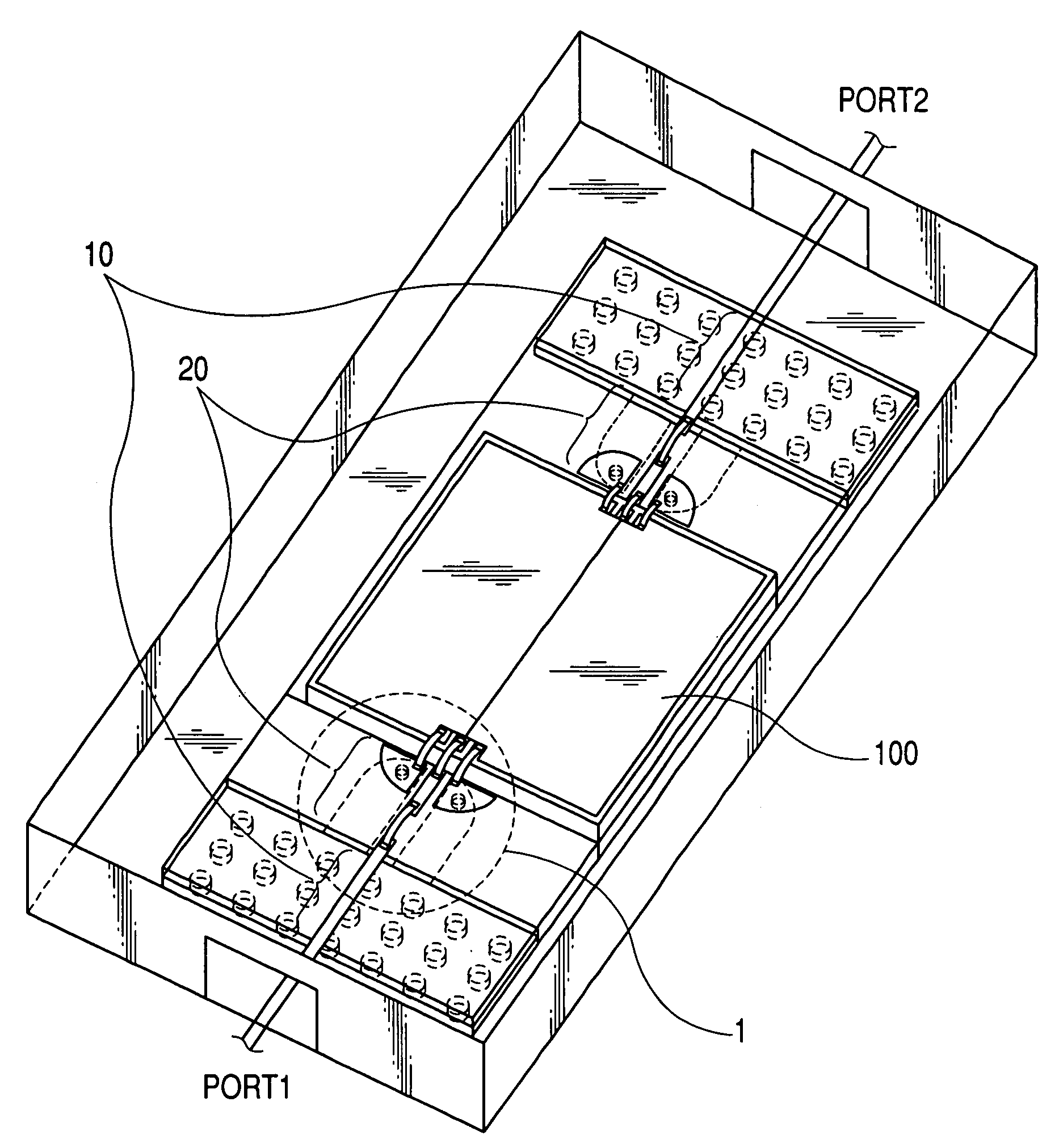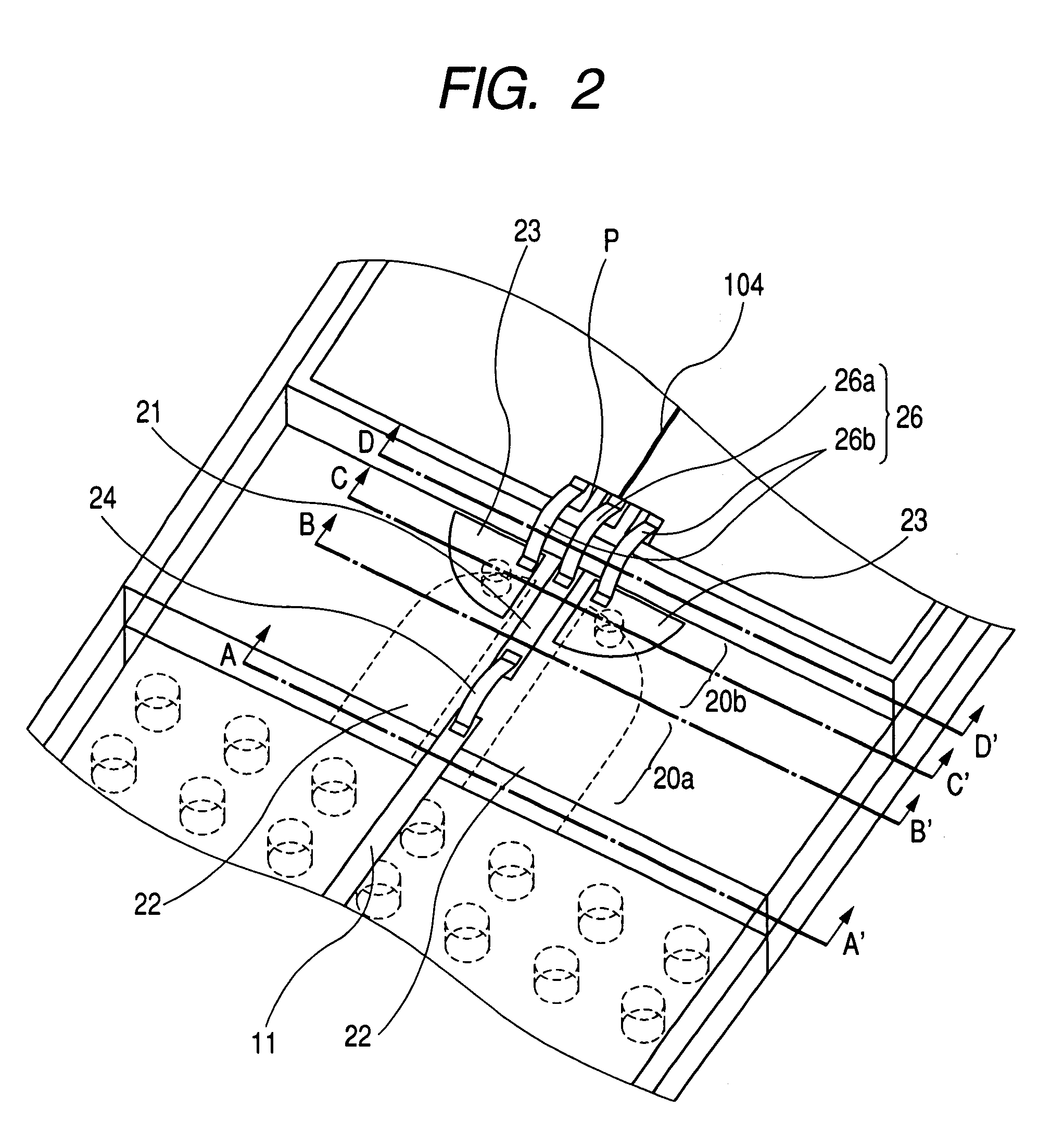High frequency circuit board converting a transmission mode of high frequency signals
a transmission mode and high frequency technology, applied in the field of high frequency circuit boards, can solve the problems of inefficiency in the conversion of transmission modes, the difficulty of creating them in the case of organic substrates, and the increase of the gap, so as to suppress the generation of parallel plate modes and enhance isolation. the effect of low loss
- Summary
- Abstract
- Description
- Claims
- Application Information
AI Technical Summary
Benefits of technology
Problems solved by technology
Method used
Image
Examples
first embodiment
[0039]First, a configuration of a high frequency circuit board according to the present invention will be described.
[0040]FIG. 1 is a view of high frequency circuit board according to the present invention seen from diagonally above. The high frequency circuit board includes a microstrip line 10, a coplanar line 20, and ports 1, 2, and is symmetrically configured laterally and vertically. The high frequency circuit board is also mounted with a chip 100. In this case, because of ease of simulation, in place of a semiconductor device, a dummy chip 100 formed with a microstrip line 105 is used.
[0041]FIG. 2 is an expanded view of a major portion 1 of the present invention, and FIG. 3A to FIG. 3D shows sections cut along A-A′, B-B′, C-C′ and D-D′, respectively. In FIG. 3A to FIG. 3D, arrows show a direction of the electric field when signals are transmitted. The configuration of the circuit board according to the present invention will be described in more details referring to FIG. 2 and...
second embodiment
[0053]FIG. 7 is a view of a high frequency circuit board according to the Second Embodiment seen from diagonally above. The high frequency circuit board includes a microstrip line 300 and a coplanar line 400 that have the same configurations as the First Embodiment, and ports 1 to 4, and is symmetrically configured laterally and vertically. The high frequency circuit board is also mounted with a chip 200. The chip 200 is formed with two microstrip lines which are configured to connect the port 1 to the port 2, and the port 3 to the port 4, respectively. The chip 200 has the same configuration as the chip 100 except that there are two microstrip lines.
[0054]FIG. 8 shows a result obtained by a simulation on transmission characteristic in the case where the frequency of a signal inputted through the port 1 of the high frequency circuit board according to the Second Embodiment is changed.
[0055]These characteristics are: the transmission characteristic S21 from the port 1 to the port 2, ...
PUM
 Login to View More
Login to View More Abstract
Description
Claims
Application Information
 Login to View More
Login to View More - R&D
- Intellectual Property
- Life Sciences
- Materials
- Tech Scout
- Unparalleled Data Quality
- Higher Quality Content
- 60% Fewer Hallucinations
Browse by: Latest US Patents, China's latest patents, Technical Efficacy Thesaurus, Application Domain, Technology Topic, Popular Technical Reports.
© 2025 PatSnap. All rights reserved.Legal|Privacy policy|Modern Slavery Act Transparency Statement|Sitemap|About US| Contact US: help@patsnap.com



